Why are some teams more successful than others even when they have comparable resources, challenges, and opportunities? The secret may be synergy.
Synergy is derived from the Greek word ‘synergos’ which means to work together. We know that a team is simply two or more people working together to achieve a specific aim. Teamwork and synergy are therefore inextricably linked.
The happy state when the output of a team is greater than the sum of the work of each individual team member is called positive synergy. The classic example is the interactions between Hydrogen and Oxygen atoms that create water. In medicine we combine penicillin and aminoglycoside for greater bacteriocidic effect; and instruments performing in an orchestra can produce sublime harmonies.
In the examples, each element, part or member of the team contributes value, but it is the relationships between the team members and the way in which different parts interact and interconnect that create positive synergy; fittingly described as the ‘assembly bonus effect’ in 1965.
Team synergy can unfortunately also be negative and occurs when the overall output is less than any team members could have delivered individually. Consider how adding Sulphur to water would transform a life-giving substance into deadly sulfuric acid. Similarly, team members without the necessary skills and attributes may adversely impact synergy. Brook’s Law described in The Mythical Man-Month has achieved cult status in software development and exemplifies negative synergy: ‘adding manpower to a software project that is late will make it even later’.
It is common for teams to experience negative synergy when they forget or divert from their intended purpose, or recruit and retain members who lack the necessary skills and attributes. Louis E Romero explained in Forbes magazine that ‘anyone who has ever had real team leadership responsibilities knows that hiring the wrong person is far worse than not hiring the right person. Figuratively speaking, it is a lot more difficult to turn a piece of carbon into a diamond than to continue to mine for actual diamonds.’
Teams with positive, strong synergies are those whose members have common interests and common values (i.e. humility, honesty, trust, and discipline) but different, complementary talents. They are also characterized by deep diversity. McKinsey & Company found that companies in the top quartile for gender or racial and ethnic diversity are more likely to have financial returns above their national industry medians. The converse is also true – companies in the bottom diversity quartile are statistically less likely to achieve above-average returns.
Effective teams can be identified through the actions of their members. Members actively identify and respect points of disagreement. They encourage debate and believe that the group performance exceeds the contribution of any single individual. They also resist group think and are rich in Collective Intelligence.
Group think is a phenomenon that develops as the social cohesion of groups increase with time. While social cohesion is beneficial to individual team members, it often adversely affects the decision-making ability and effectiveness of the group. When group think develops, members strive for unanimity and do not realistically appraise alternative courses of action. Two notable historical examples are the unanticipated attack on Pearl Harbor (1941) and the fiasco of the Bay of Pigs invasion (1961).
Positive synergy is characterized by the emergence of collective, shared, ‘symbiotic’ or group intelligence. The Collective Intelligence Quotient (CIQ) of teams is a measure of the shift of knowledge and power from the individual to the collective. It is a practical measure that enables us to better understand and explore the synergy and other secrets of successful teams.

